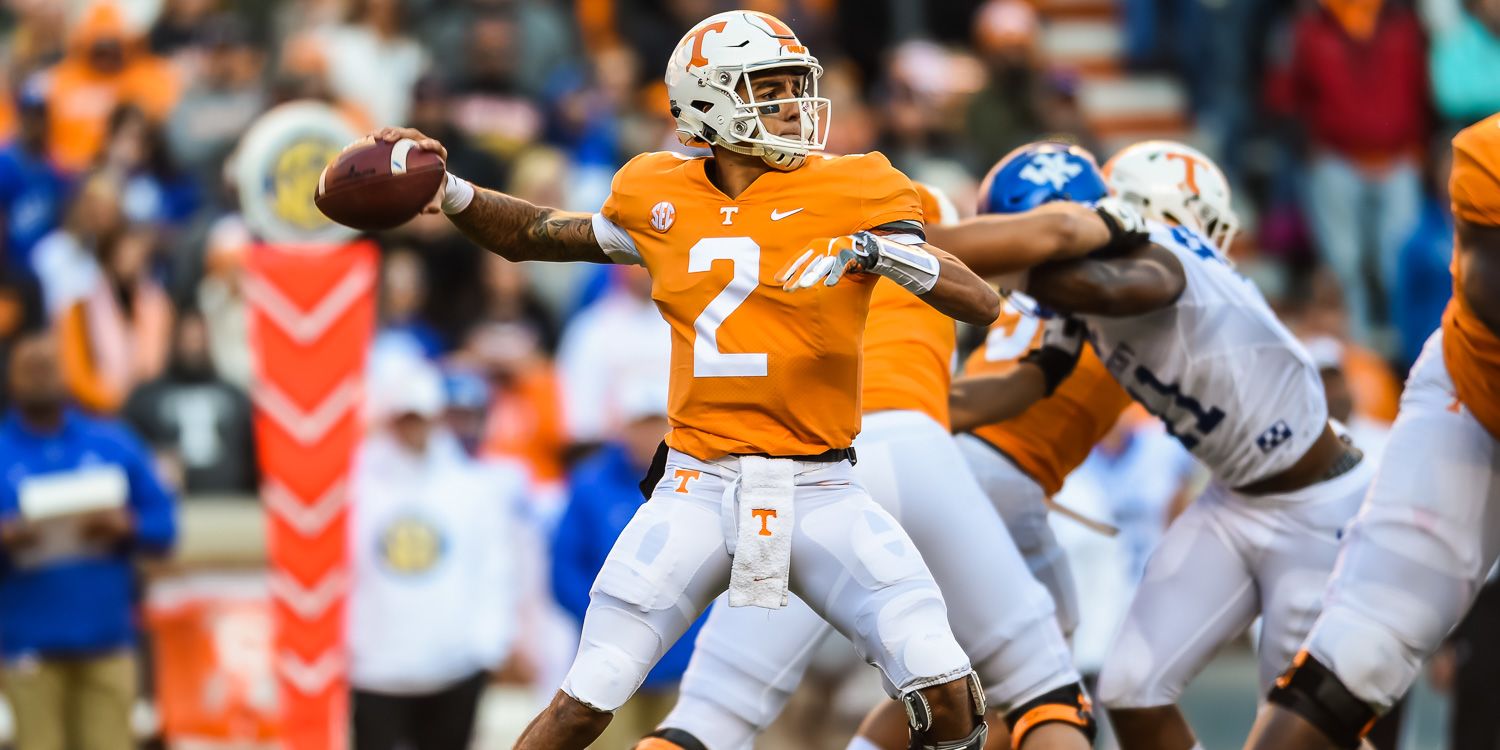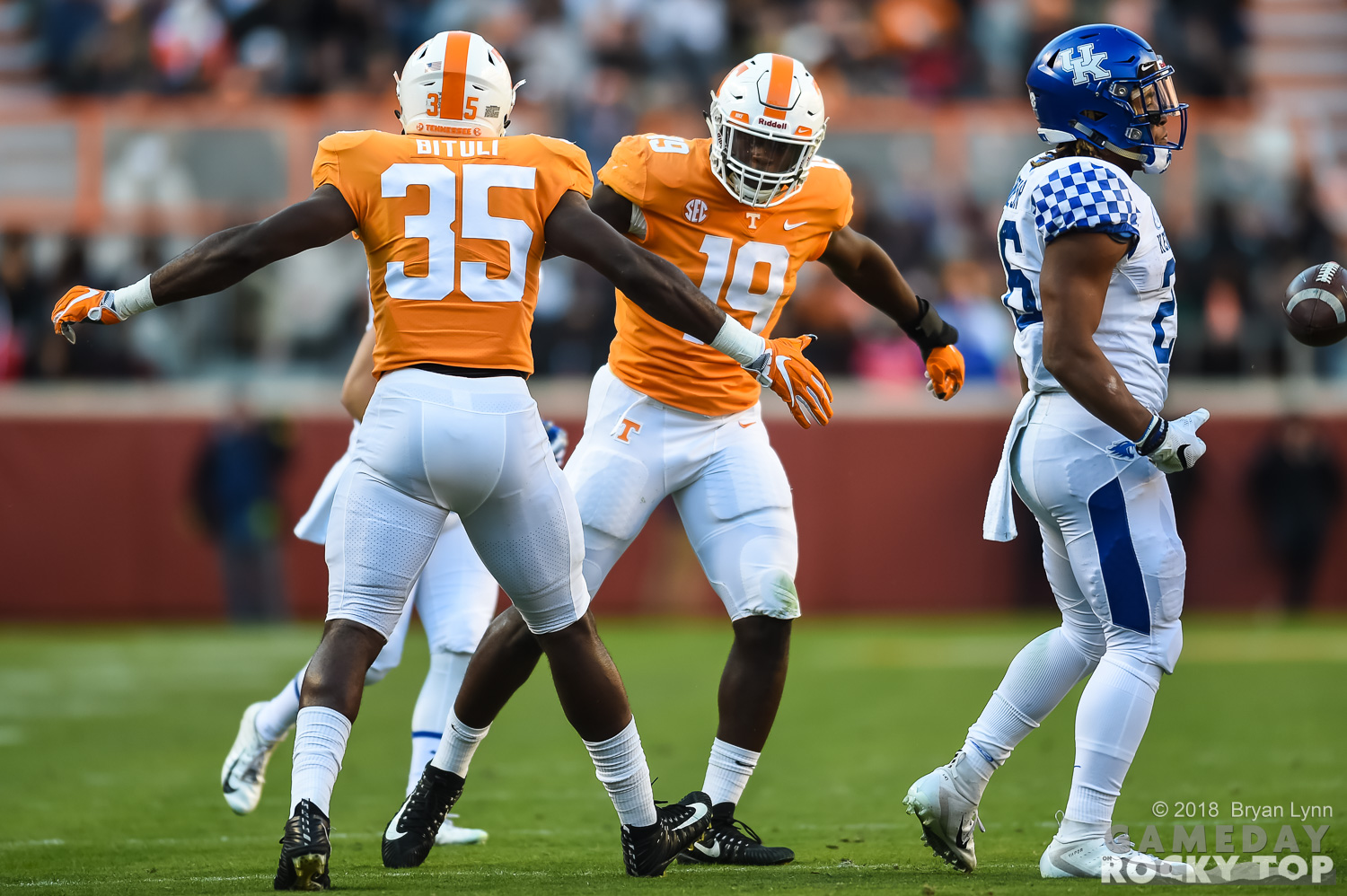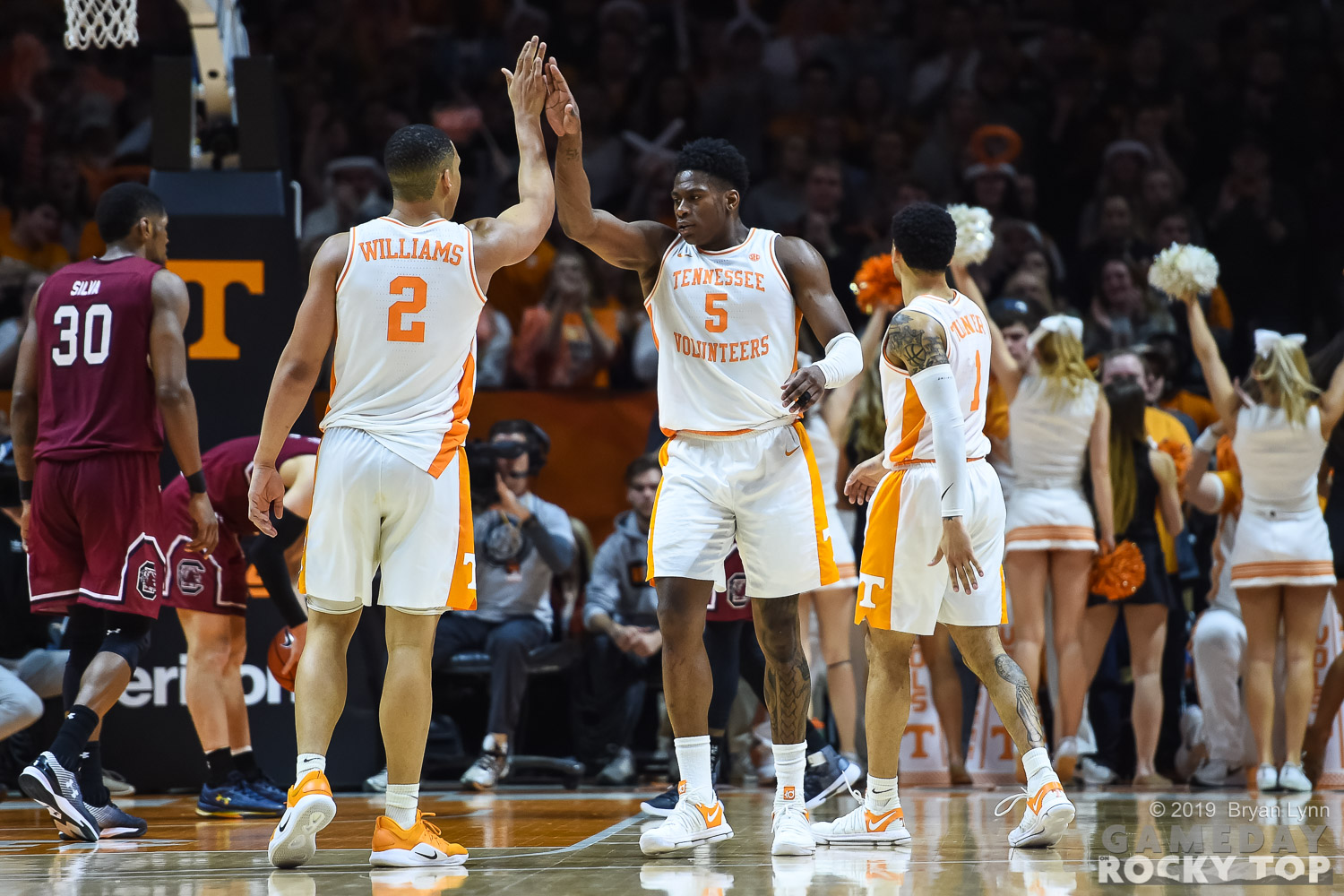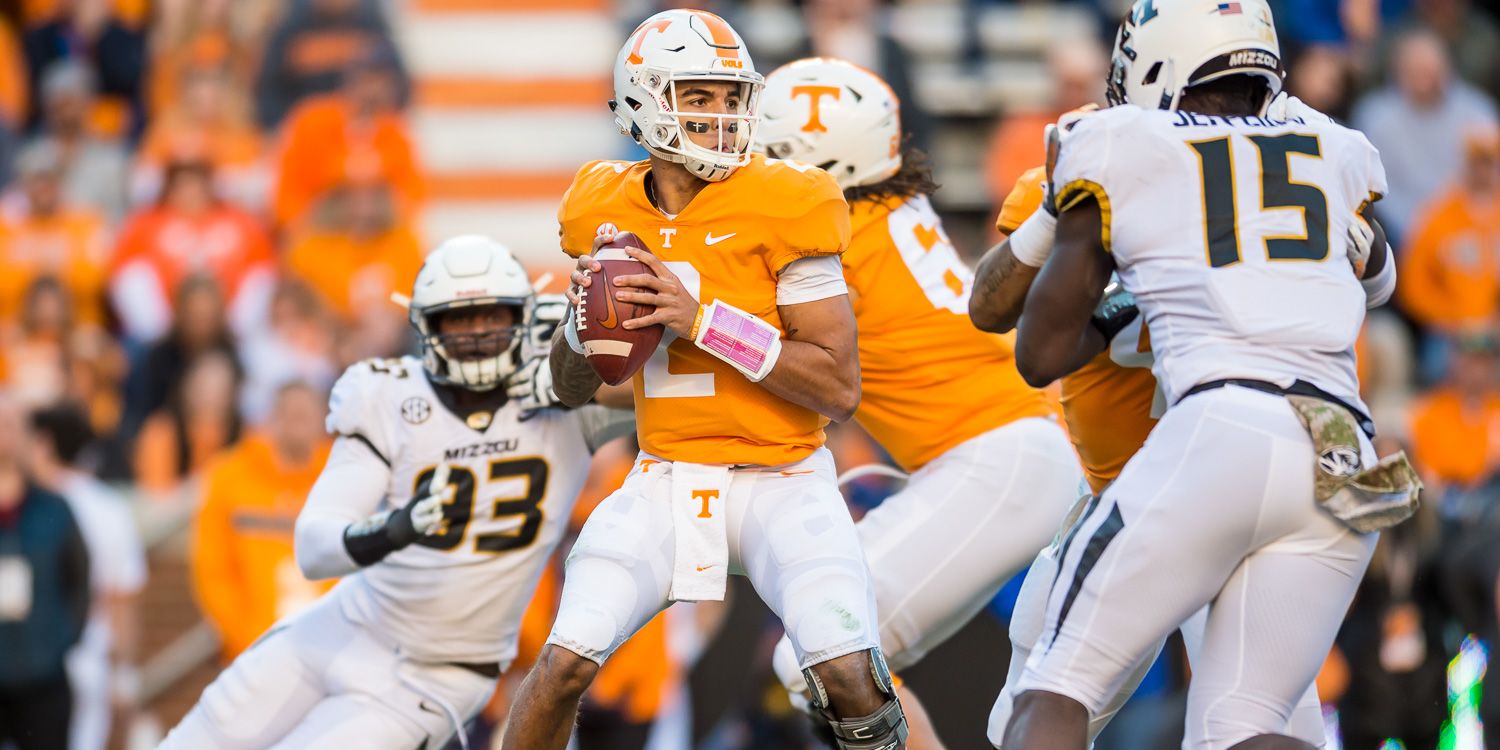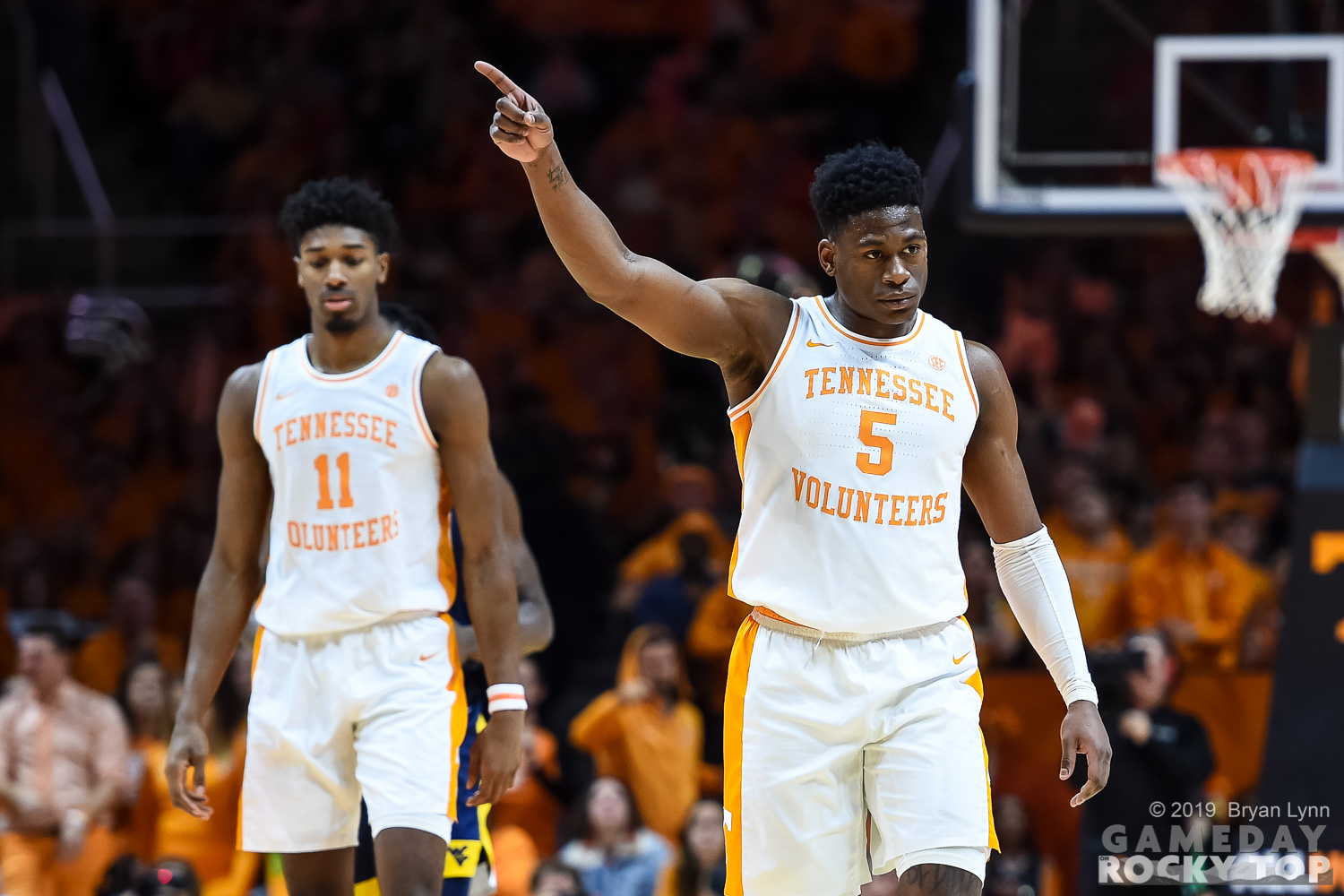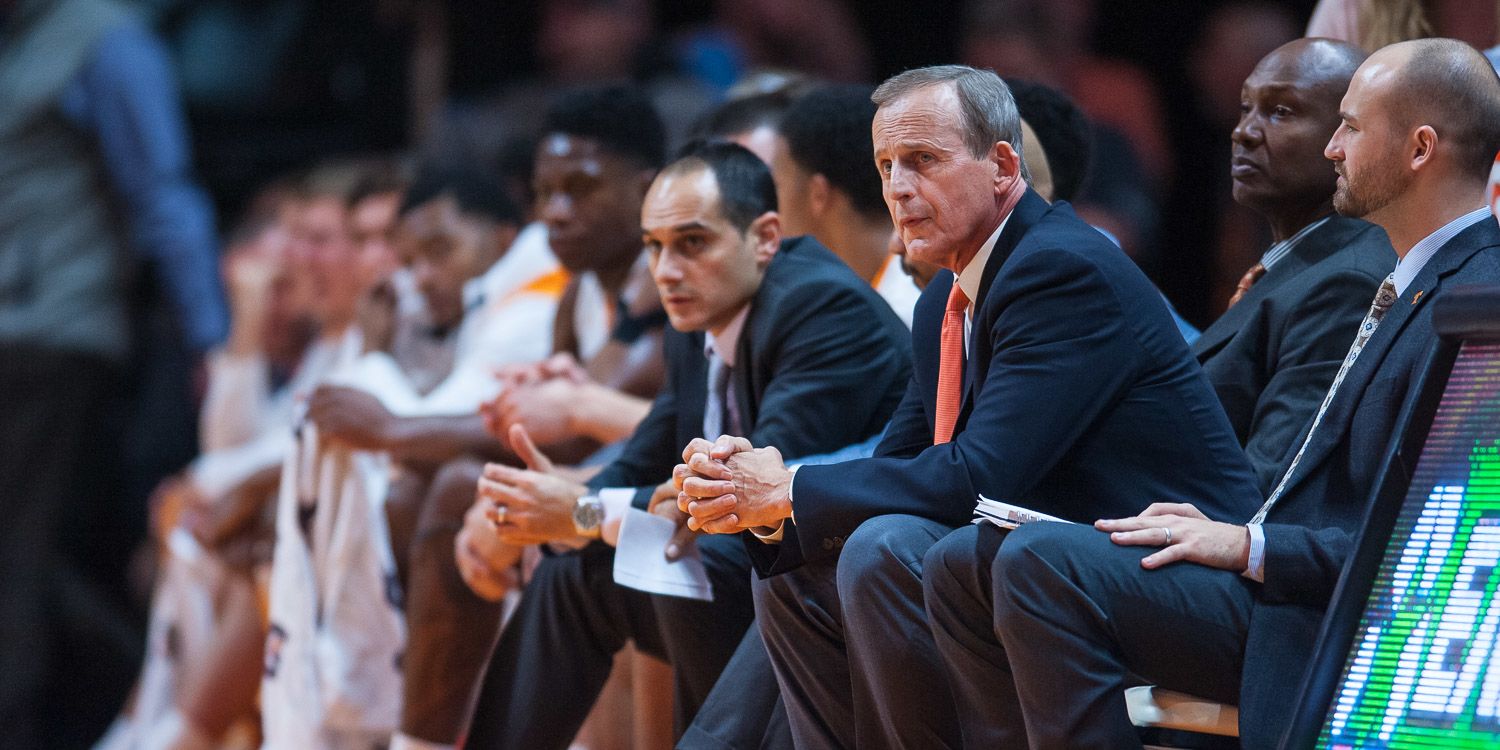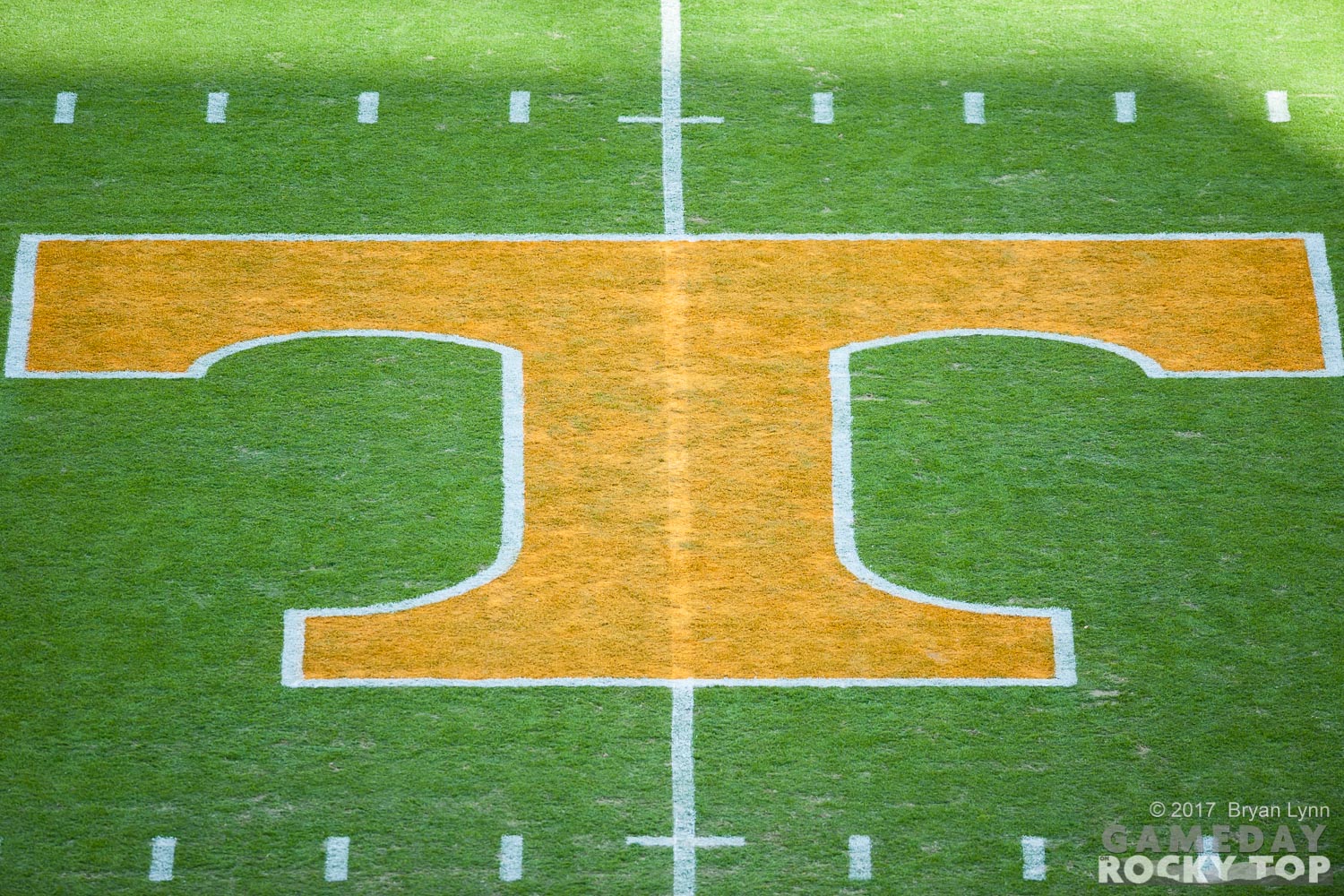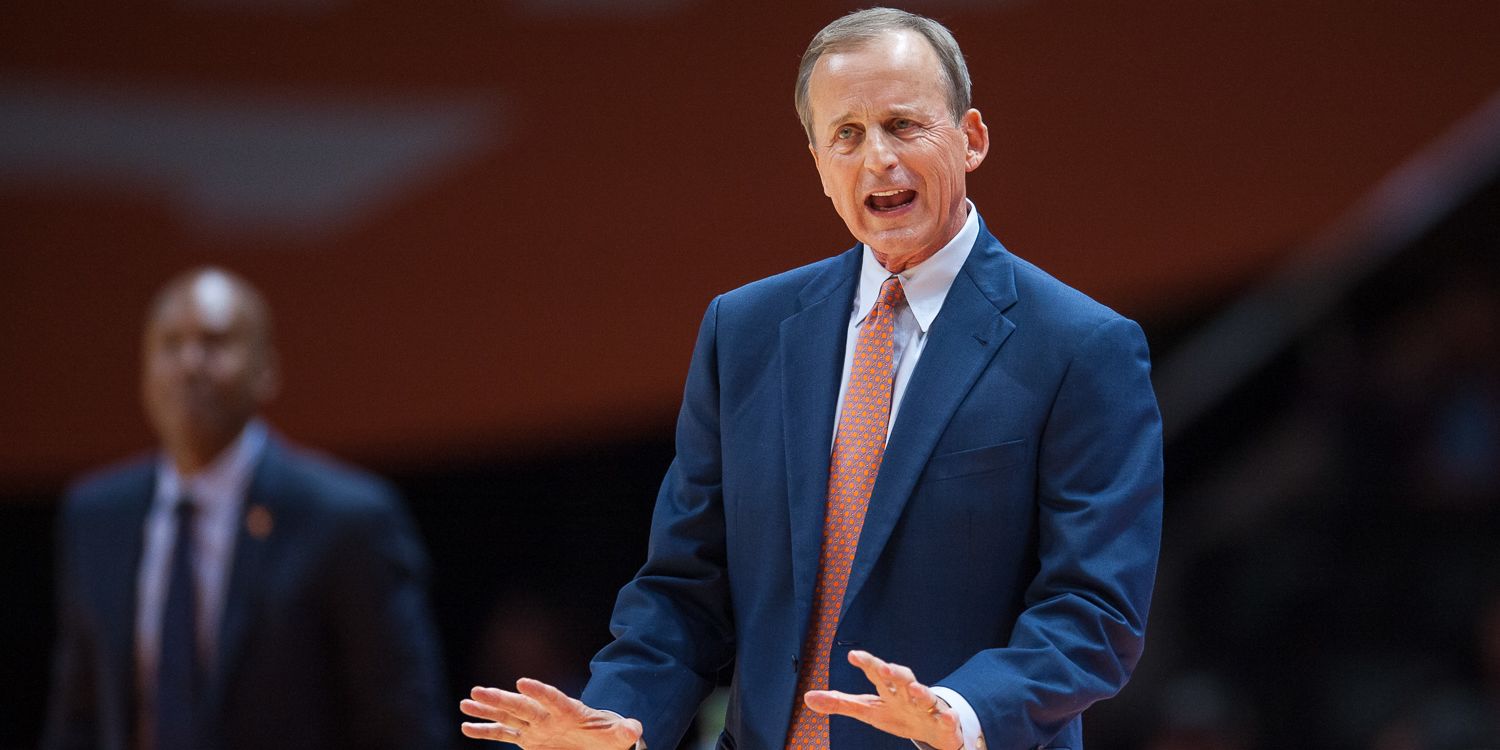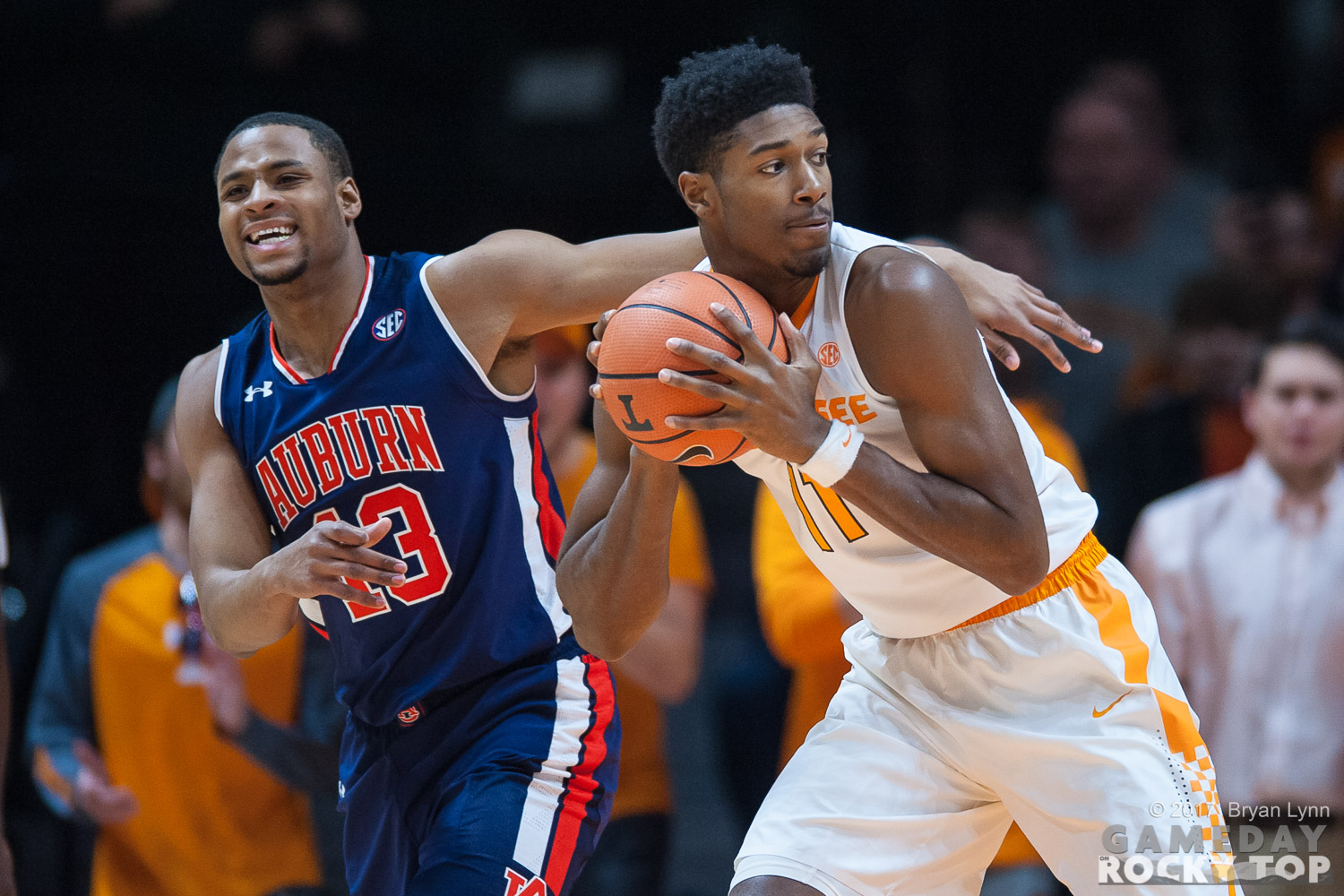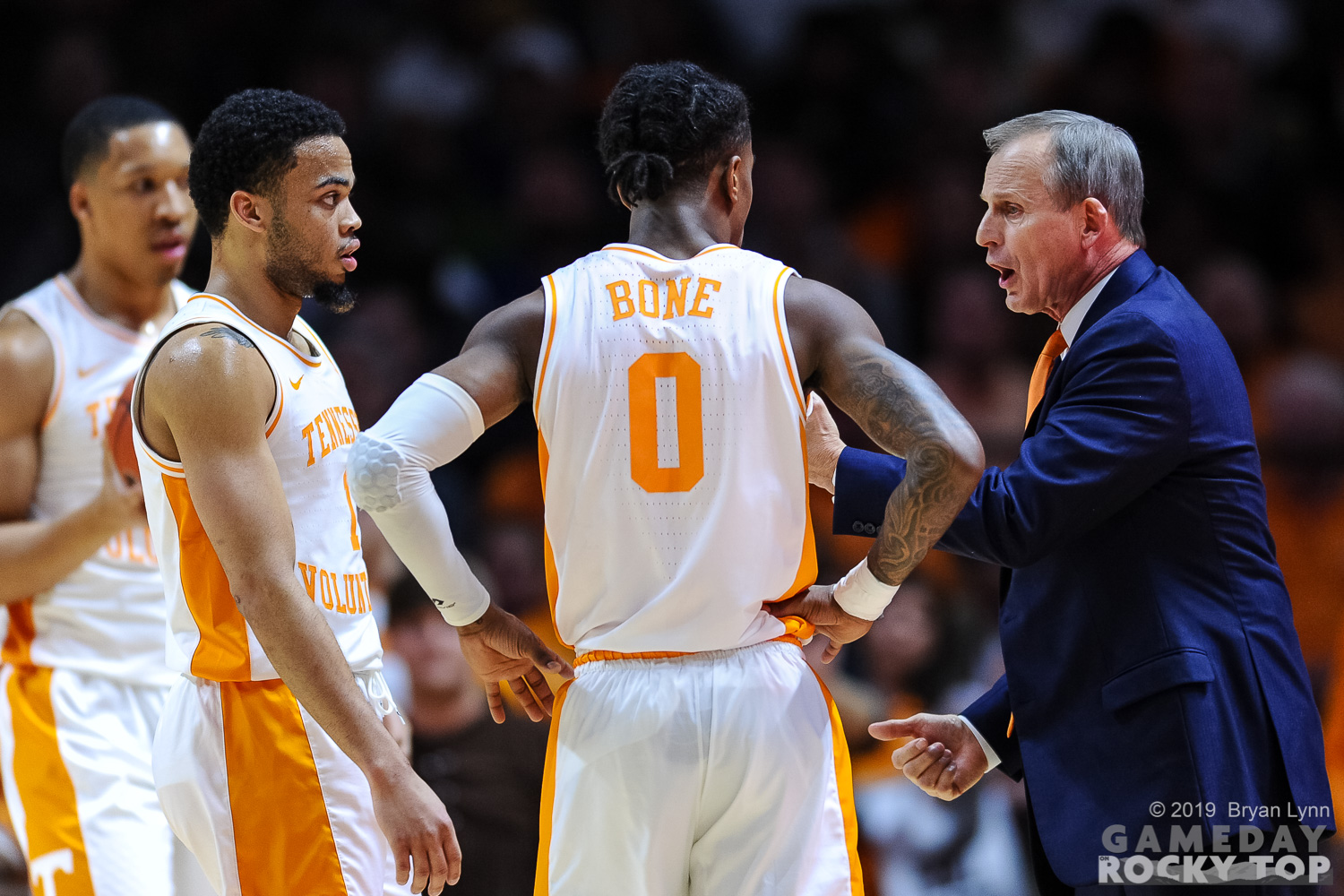Starting with the regular season finale against the Vols, Auburn hit 108 threes in eight consecutive games – a ridiculous 13.5 per – including 15 against Tennessee in the SEC Tournament Championship and 17 against North Carolina in the Sweet 16. Then they beat Kentucky while hitting only 7-of-23 (30.4%) and playing without Chuma Okeke. Auburn’s path to the Final Four included no upsets in the bracket: the Tigers beat a 12, 4, 1, and 2. Now they’ll get another No. 1 from Virginia. It’s an incredible accomplishment for an incredible coach.
Maybe you’re happy for Bruce; the alternative, of course, was Kentucky in the Final Four. Maybe you would’ve preferred the Cats to win; that’s a certainly a simpler outcome from our perspective, and would’ve put a team the Vols beat twice two steps from the national title. Maybe you just didn’t care to watch then, and won’t care to watch this weekend.
Any of those options are fine. Do what you want.
Just don’t pretend bad things always happen to Tennessee just because good things are happening for Bruce Pearl.
I’d imagine there’s a small demographic that was raised to expect the worst instead of the best. You don’t have to be too young to remember 1998 or 2001, just too young to remember 2007-08: a division title in football, back-to-back national championships for the Lady Vols, and a run to #1 with an SEC title in basketball. It’s the last time the athletic department was firing on all cylinders.
And when Fulmer was out the next year and we followed it with the Kiffin/Dooley exchange, Bruce Pearl took the 2010 Vols to the program’s first Elite Eight, a point away from the Final Four. In those big three sports, it’s the athletic department’s last blip on a national championship radar.
If you’re too young for 2007-08, you might even think of that 2010 run as a symptom of Tennessee’s malaise: Elite Eight one March, had to fire the coach the next. For the next seven years, even the high points were complicated. Cuonzo Martin’s run to the Sweet 16 in 2014. Individual great wins under Butch Jones that never stood the test of time by turning into great seasons, including an especially close 2015 and an only-up-then-only-down 2016. Elite Eights for Holly Warlick in 2013, 2015, and 2016, but no Final Four breakthrough.
For certain younger fans, I’m sure it seems like bad things do always happen to Tennessee. I can understand a negative instinctual response to Pearl cutting down the nets to get to the Final Four.
But watching Pearl make the Final Four – or win it all, which he might – isn’t the worst case scenario. The worst case scenario would’ve been all of that happening if Tennessee actually did finish 13th in the SEC two years ago.
It would’ve been bad enough last season, a basement SEC finish while Pearl won the league title. And even a reasonable follow-up from 13th place this season – which almost certainly wouldn’t have included the kind of wins on the recruiting trail the Vols are currently enjoying – would’ve been no match for watching Pearl do this.
Both would’ve driven us right back to the Bring Back Bruce fantasy at record speed, or at least a lament of its loss if we could bring ourselves to acknowledge that it was, in fact, fantasy. And that’s the thing about fantasy: reality is always better, because it’s, you know, real.
And here’s what’s really, actually, no-kidding happened at Tennessee the last two years:
- 57 wins, a two-year program record
- A No. 3 seed and No. 2 seed back-to-back, a two-year program record
- Four weeks at #1, a program record
- 4-2 against Kentucky
- Our first consensus first-team All-American since 1983
- 2018 SEC Championship
- 2019 Sweet 16
It’s that last point where some will complain this team should’ve gone farther. I’m still in the “give Purdue credit” camp a week later; the bigger missed opportunity still feels like Loyola-Chicago. It’s understandable when you spend most of the year believing this is the best team in school history, there’s disappointment when they go out before becoming just the second team in school history to make the Elite Eight.
We talked about the myth of linear progression last week; you want progress for sure, but it’s never exclusively linear. It felt that way for Pearl at Tennessee, but I’d imagine it did not his first two years at Auburn.
The Vols are a program with only one Elite Eight to its name. But it will always be a dangerous game to make the NCAA Tournament a pass/fail rubric for the program’s success.
Here’s a list of the most Sweet 16 appearances since 2007:
- Nine: Kansas, North Carolina
- Eight: Duke, Kentucky, Michigan State
- Seven: Wisconsin
- Six: Arizona, Florida, Gonzaga, Louisville, Syracuse, Xavier
- Five: Michigan, Ohio State, Oregon, Purdue, Tennessee, UCLA, West Virginia
When fans say, “We should make the Sweet 16 every year!”? Even the bluest of bloods miss out 30% of the time. And in these last 13 years, only six programs have made the Sweet 16 more often than not. It is, of course, not the ultimate goal for any program, and it’s not a hard-and-fast measure of success: Villanova has only four Sweet 16 appearances but two national championships since 2007. But for Tennessee, it’s still a good benchmark. And when the program is healthy – which still might be Rick Barnes’ greatest accomplishment – you build forward progress from there.
The NCAA Tournament will always be a unique, often cruel, and occasionally beautiful challenge. The entire goal of the regular season is to get your team playing its best basketball in March, and win enough games along the way to make the bracket as easy as possible. In this, Barnes has done a great job: a No. 3 seed and No. 2 seed the last two years is the best anyone from the SEC has done, besting Kentucky (No. 5 and No. 2) and Auburn (No. 4 and No. 5). And as we’ve seen, once you get there anything can happen, good or bad.
It’s understandable to have wanted more for this team. But given the history of Tennessee’s program and the last decade in this athletic department? I don’t understand treating these last two years like they were anything less than spectacular, no matter what Auburn does.
So cheer for Bruce. Or cheer against him. Or don’t watch. But acting like something bad always happens to Tennessee just because something good is happening to Pearl? Most of us are old enough to know better. And those who aren’t should be more appreciative of the last two seasons than any of us.
The last time things were this good for Tennessee basketball, Pearl was in trouble with the NCAA five months later. Maybe he will be again at Auburn, maybe he won’t. Maybe he’ll win it all this weekend, maybe Virginia will win by 30. But the most important truth for Tennessee has nothing to do with Pearl.
Because the most important truth is this: there is as much reason to believe in Tennessee basketball right now than at any point in my lifetime.
